Click on images to enlarge

dense infestation (Photo: Trevor James)
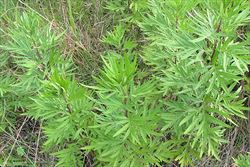
habit prior to flowering (Photo: Sheldon Navie)

habit beginning to flower (Photo: Trevor James)

habit in full flower (Photo: Trevor James)

deeply-divided lower leaves (Photo: Sheldon Navie)
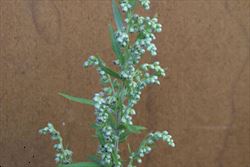
clusters of young flower-heads (Photo: Trevor James)

almost entire upper leaves and clusters of flower-heads (Photo: Trevor James)

close-up showing whitish leaf undersides and older flower-heads (Photo: Jackie Miles)
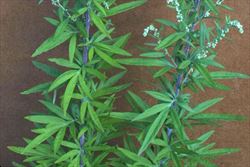
less-divided upper leaves (Photo: Trevor James)
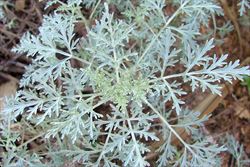
absinth wormwood, Artemisia absinthium (Photo: Sheldon Navie)

tree wormwood, Artemisia arborescens (Photo: Sheldon Navie)
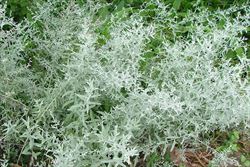
silver wormwood, Artemisia ludoviciana var. albula (Photo: Sheldon Navie)
Scientific Name
Artemisia verlotiorum Lamotte
Family
Asteraceae (Queensland, New South Wales, the ACT, Victoria, Tasmania, Western Australia and the Northern Territory)Compositae (South Australia)
Common Names
Chinese mugwort, Chinese wormwood, mugwort, Verlot's mugwort
Origin
Native to eastern Asia (i.e. south-western China).
Naturalised Distribution
Widely naturalised in eastern Australia (i.e. in south-eastern Queensland, southern and eastern New South Wales and southern Victoria). It was also naturalised in the ACT, but has not been collected there for more than 30 years, and is possibly also naturalised on Christmas Island.
Notes
Chinese wormwood (Artemisia verlotiorum) is regarded as an environmental weed in Victoria and some parts of New South Wales, and is regarded as a potential environmental weed in other parts of Australia (e.g. south-eastern Queensland). This species has long been cultivated for its medicinal properties, but has escaped cultivation and become naturalised mainly in moist sites (e.g. on riverbanks, in riparian vegetation and in swampy or marshy areas) or disturbed areas. It spreads vegetatively via creeping underground stems (i.e. rhizomes) to form large and dense colonies, while long range dispersal occurs via wind and water transport.
The creeping underground stems (i.e. rhizomes) can dominate the upper soil layers, allowing this species to out-compete other plants for available soil moisture. The density of Chinese wormwood (Artemisia verlotiorum) stands can also smother other groundcover plants and prevent the regeneration of native trees and shrubs. In addition, the sand stabilising nature of its growth habit can influence the structure and behaviour of rivers through the accreation of soil and formation of islands.
Because of these characters, Chinese wormwood (Artemisia verlotiorum) is thought to pose a very serious threat to one or more vegetation formations in Victoria. It is listed as an environmental weed in the Goulburn Broken Catchment and as one of the most important environmental weeds in Yarra Bend Park in suburban Melbourne.
In New South Wales it is probably of most concern along the southern coast, where it is cuasing problems on the sandy banks of rivers (e.g. along the Bega River near Bega). Chinese wormwood (Artemisia verlotiorum) has also recently beocme of some concern in suburban Brisbane and other parts of south-eastern Queensland.

